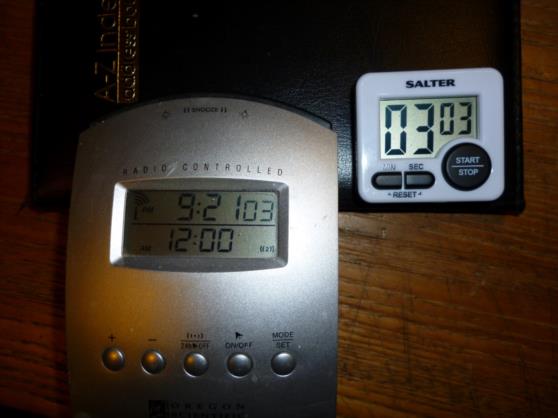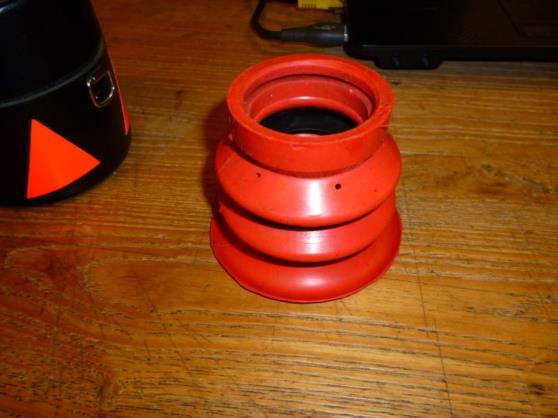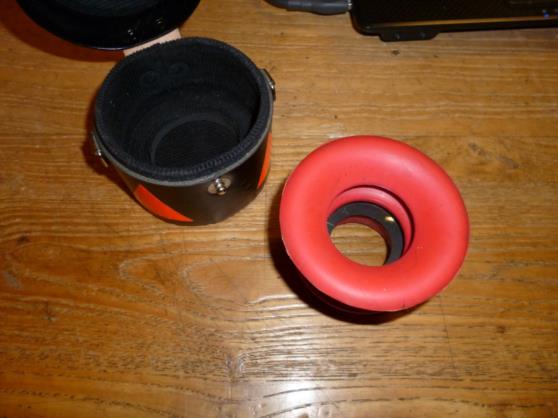
NavList:
A Community Devoted to the Preservation and Practice of Celestial Navigation and Other Methods of Traditional Wayfinding
From: David Pike
Date: 2016 Feb 14, 14:32 -0800
These are just a few ideas for shooting solo celestial.
Reading your watch in the dark without the need for extra hands: Wear your watch on the inside of your right wrist. Then when you press the button that operates the bulb which lights up the arc with your thumb, the light shines past the sextant and onto your watch as well.
Recording an exact time: Buy an inexpensive kitchen up/down timer. Mine cost £6.99, but that was because they’d run out of the £2.99 ones. Set it to zero, and then start it in synchronisation with your master time source at an exact number of minutes. Write down the time difference before you forget. E.g. in the photo the clock is exactly 9 hours 18minutes ahead of the timer. Carefully attach the timer on or close to the sextant handle. Stop the timer with your thumb at the required time. At your leisure, add the time difference to get the time of the shot.
Seeing stars though the sextant. You might be able to move and mark your telescope eyepiece to focus on a distant object. However if you're stuck with a fixed focus that doesn’t suit you, as with most aircraft sextants, obtain your distant prescription for the required eye. Find an eyepiece rubber that fits your sextant. Take both to a friendly optician and ask him/her to make a lens to fit inside the rubber. Being for a Smiths sextant, mine’s massive (see photos), but they can probably make one smaller. It’s important to have a series of air holes in the rubber. Otherwise, if you take a lurch forward, you get a nasty surprise when you lurch backwards again. I once encountered an imperforate eye rubber (before I had my personal prescription one), and when I removed my eye, it felt like it was sucking my eyeball out. Hope this helps. Dave P









